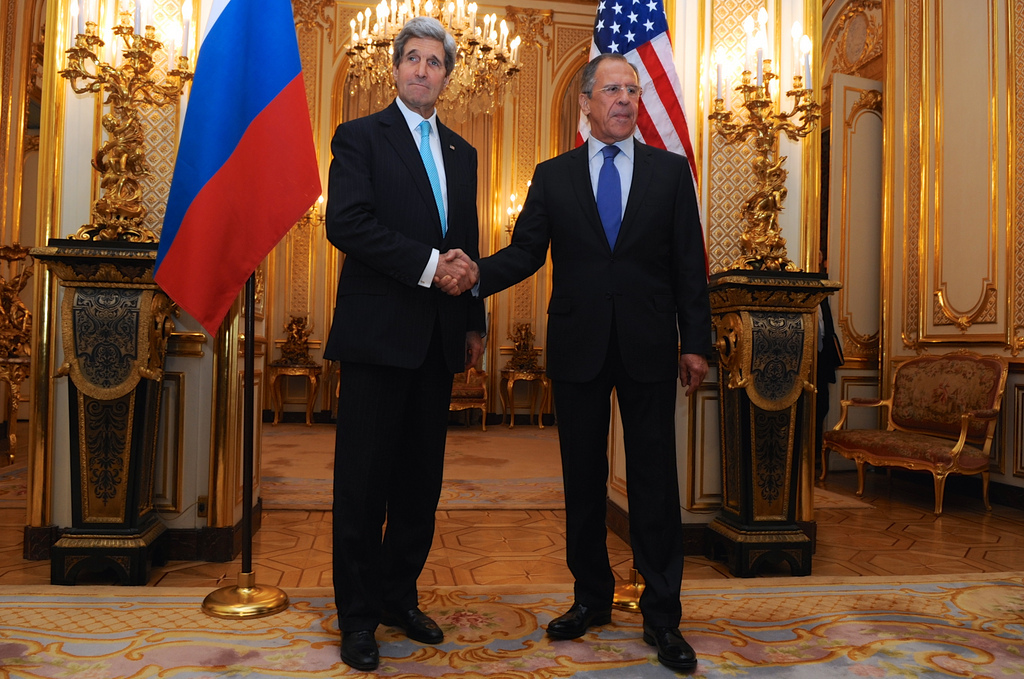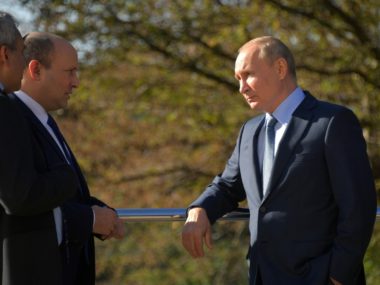By Sara Bjerg Moller.
Last week’s announcement of a cease-fire agreement between the United States and Russia seemed to be a major diplomatic breakthrough. The accidental US bombing of Syrian forces instead of the intended Islamic State forces over the weekend represents the first hurdle for the new US–Russia military partnership. It is unlikely to be the last.
Months of lobbying by Secretary of State John F. Kerry helped produce the initial seven-day cease-fire arrangement. Assuming both sides proceed to the next step, the proposed US–Russian military coordination that is expected to follow will be even tougher to implement, however.
The US government has been divided over what to do about Syrian President Bashar al-Assad, but Russia has been resolute in its support for the regime from the beginning. US officials have long maintained that the Russians were more interested in bombing Assad’s opponents than taking the fight to Islamic State rebels. Although Russian planes have struck ISIS targets in the past, the new agreement is Washington’s attempt to ensure that the Russians from now on target the “right” groups.
Greater military coordination is the next step
US and Russian officials have been exchanging information about their respective airstrikes for nearly a year, seeking to avoid an accident in the skies. These military exchanges did not involve direct military coordination such as joint planning or joint action, so the Sept. 9 cessation-of-hostilities agreement marks a steep change.
To longtime observers of multinational conflicts like myself, the move toward greater military coordination is a predictable step. My research has shown how multinational wars follow a familiar pattern: From relatively independent beginnings, participating militaries coordinate far more closely as battlefield conditions deteriorate.
The movement toward greater military coordination often goes hand in hand with a shift toward more integrated command and control arrangements and structures. Typically, of course, this pattern unfolds among countries that already are allied or fighting on the same side.
But the United States and Russia have been on opposing sides in the Syrian conflict from the beginning, pursuing different objectives and fighting different militant groups.
How is this move toward greater cooperation going to play out? Here are three specific concerns about the implementation of this unusual agreement:
1) How will the United States and Russia share sensitive information? Although the text of the US–Russian agreement has not yet been released, the two militaries are expected to coordinate far more closely on targeting by establishing a US–Russia Joint Implementation Center (JIC). According to one official familiar with the details, representatives from the United States, Russia, and 11 other nations will be “sitting down in a room together” to identify targets and coordinate strikes.
But Pentagon officials (including Defense Secretary Ashton B. Carter) have voiced their concerns that this level of coordination would entail disclosing sensitive information with the Russians, including the location of US forces in the area. As Gen. Philip Breedlove stated this week, “There are a lot of concerns about putting out there where our folks are.”
2) Are the logistical channels in place for joint military actions? My research indicates that interoperability and standardization problems have historically been a major impediment to the effectiveness of coalitions. Mismatches in military equipment and ordinance among militaries make it difficult to wage combined operations: Ammunition sharing is impossible, and one country can’t help resupply another.
During World War II, for instance, British and American small weapons and artillery used different caliber ammunition — a point that hurt Allied combined combat operations in North Africa and Italy in the early stages of the war.
3) Do the United States and Russia have the right communication tools? Russia is not a NATO member, and the United States and Russia have limited experience sharing wartime communications.
But multinational military operations need standardized communications equipment and procedures to be effective. Without secure and interoperable communication interfaces, multinational forces cannot execute time-sensitive and dynamic targeting of the enemy’s assets.
During the first Gulf War, for instance, the United States had to lend the United Kingdom critical communications equipment because of incompatibility problems. The United States had to bring in additional resources to ensure communication interoperability with non-NATO members of the coalition.
Although NATO is the most integrated military alliance in history, communication and intelligence sharing has been a major challenge for members over the years. During Operation Deny Flight, NATO’s 1993-1995 mission in Bosnia, some allied fighter planes lacked the cryptography equipment to allow pilots to make secure radio transmissions.
There are lessons from Libya
Challenges in NATO’s ability to share classified information such as air tasking orders and surveillance and reconnaissance images also emerged more recently during the alliance’s 2011 air campaign in Libya. The commander of NATO’s Allied Air Command, Gen. Mark Welsh, later described the Alliance’s inability to pass targeting and other intelligence among members as a “critical shortfall” of the mission.
But the greater challenge was communicating mission-tasking information to non-NATO members. The Swedish Air Force, for instance, could not plug into NATO’s communications and information systems — so relied on Danish bicycle messengers at Sigonella Naval Air Station in Italy to ferry USB drives with operational information (including mission orders) back and forth.
As these short vignettes demonstrate, “military coordination” can be difficult, even among friends. It is likely to be harder still among rivals and former enemies — a reality US and Russian officials will grapple with in the coming weeks and months as they seek to coordinate their activities in Syria.
Sara Bjerg Moller is Assistant Professor in the School of Diplomacy and International Relations at Seton Hall University.
*This piece is a cross-post that originally appeared at The Monkey Cage.






